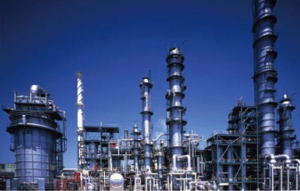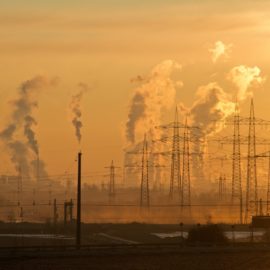
The gift that gives on giving. That is the Denka plant in La Place. The gift is a cancer causing emission even when it is not in operation.
The Denka Performance Elastomer plant in St. John the Baptist Parish shut down for the month of September after Hurricane Ida barreled through the river parishes. But, in late September, a small demonstration test by the LSU School of Public Health found chloroprene and other likely or known carcinogens that Denka emits remained in the air near a local public school and elsewhere not far from the plant. Researchers also tested the urine of a handful of people who lived near the plant and found signs they had been exposed to chloroprene and other chemicals, according to a new report made public Monday. Denka, a former DuPont complex in LaPlace that has been in operation since 1969, has been the focus of scrutiny from regulators and community and environmental groups since the U.S. Environmental Protection Agency announced in 2010 that chloroprene was a likely carcinogen. Denka is the nation’s only emitter of chloroprene, a byproduct from the creation of neoprene, the EPA says.. The synthetic rubber is used in wetsuits, drink koozies, medical braces and variety of other commercial and industrial uses.
theadvocate.com
What a deal! Getting to live close to the only plant in the US that emits chlorophene. Does that mean this is the only state that wold approve it?
Even while Denka wasn’t running last September, though, two of 10 air samples taken downwind of the plant found levels of chloroprene that were four times what federal regulators say is safe for long-term exposure, LSU officials said in a statement. The samples were collected at or across the street from 5th Ward Elementary School. Denka’s own air monitors appeared to corroborate those findings, the LSU report noted.. Other air samples didn’t pick up chloroprene, but they detected other carcinogens or likely carcinogens, known broadly as volatile organic compounds, that come from the plant. Some of those compounds can also come from other sources, however. The emissions didn’t exceed safety levels for chronic exposure, however, researchers said.
These were the initial practice samples prior to starting the air quality study at LSU.
The early practice study’s collection of air and real-time health data from residents was intended to prove concepts for a larger study planned by LSU. So it wasn’t large enough to broadly characterize the exposure of residents to chloroprene and other chemicals, LSU officials added. But the results have prompted the author of the LSU study to call for continuous air monitoring around the plant, for biomonitoring of the people who live near it and of the children who go to 5th Ward Elementary. She also called for a broader look at a variety of health impacts, not just cancer, from chemicals emitted by the complex and other plants in the region. “There is a need for a cumulative risk assessment for all Denka emissions, both carcinogens and non-carcinogens, especially considering the similarities in health outcomes from many of the (volatile organic compounds) found in resident air space and/or urine,” Adrienne Katner, associate professor of environmental and occupational health in the LSU School of Public Health in New Orleans, wrote in the 25-page report and appendices. “The current health assessment approach used by (the Louisiana Department of Health), which bases risk decisions on one chemical, chloroprene, is unrealistic and underestimates risks faced by this population from other emissions and emission sources,” Katner’s report added.
So the state monitors don’t do what they should?Or is it they are not looking for what they should? At any rate, the state is letting the citizens down.
In response, state health officials announced that they have asked for technical assistance from the EPA and the federal Agency for Toxic Substances and Disease Registry, which is a division of the U.S. Centers for Disease Control and Prevention, to help evaluate the new data. The state health officials have also asked for an “assessment of the need for additional monitoring and/or data collection, and implementation of additional monitoring and data collection efforts recommended by (the federal agencies).” DEQ officials said their personnel are reviewing the LSU report. They said the agency’s experts would be consulting with the state health department and the federal agencies.
These finding come right after the EPA says they are investigating the state for bias in approving plants, specifically the Denka plant.
The LSU findings and state health officials’ new request for federal assistance comes just days after the EPA informed environmental groups that it is opening investigations into whether DEQ and LDH discriminated against Black residents during permitting decisions for Denka and two proposed facilities in the river region over the past two years. Five months ago, EPA Administrator Michael Regan had promised to take a hard look at permitting decisions in Louisiana’s chemical corridor. The new federal investigation was triggered by complaints from environmental groups. The complaint against LDH accused the health agency of failing to provide predominantly Black St. John residents with information on health threats posed by air pollutants from Denka, including the risk to students at Fifth Ward.
Denka, of course, deflects the findings by saying they are working with another group at LSU.
In their own statement, Denka officials pointed out that Katner’s research found no adverse health impacts, and a related arm of LSU — the Health Science Center’s Louisiana Tumor Registry — has not found an elevated number of cancer cases in St. John or in the census tracts around the plant. Denka officials noted that a part of the project Katner was working under in St. John has already verified the registry’s cancer data in the parish. “DPE has also worked with the Louisiana Department of Health and the Louisiana Department of Environmental Quality to study this issue and provide information to local residents for the past several years,” Jim Harris, Denka’s spokesman, said. “The health and safety of our employees and community are Denka Performance Elastomer’s top priorities and the company continues to work to reduce its environmental footprint.”
This is not the only aspect of Denka’s operations that are coming under fire.
Separately, about a month and a half before the new LSU study became public, EPA told Denka that it was investigating the company’s solid and hazardous waste management practices, an agency letter says. The EPA said it had obtained information that confirms Denka’s solid and hazardous waste disposal efforts “have resulted in the release of hazardous air pollutants into the ambient air.” “EPA has community monitoring data confirming the release of chloroprene into the ambient air,” says the Feb. 24 letter from Cheryl T. Seager, director of EPA’s regional Enforcement and Compliance Assurance Division in Dallas. EPA says it has evidence that supports a likelihood that “chloroprene is a hazardous waste and a carcinogen.” An EPA spokeswoman didn’t immediately return a request for comment Monday about whether the agency’s letter is tied to the LSU findings.
The Denka plant has made this area the worst area in the US. What a distinction!
In 2015, with EPA’s new cancer risks associated with chloroprene factored in, the federal agency concluded that five St. John census tracts near the plant had the highest airborne cancer risk in the nation. That risk was traced back to Denka’s emissions. Five years earlier, EPA’s risk assessment arm had found that it was only safe to breath 0.2 micrograms per cubic meter of chloroprene or less, on average, each year. Breathing chloroprene continuously above that level put people an increased risk of cancer that EPA has determined is unacceptable. Environmentalists also say short-term exposure can cause problems such as asthma and skin irritations. EPA, however, has not made the long-term safety level an enforceable standard. Denka has appealed EPA’s method of determining chloroprene’s cancer risk. Calling it flawed, Denka has produced its own model of cancer risk for chloroprene that finds it far less carcinogenic than what EPA concluded.
If it is “fake news” then why has Denka instaled more scrubbers?
In spite of these concerns, Denka said it installed $35 million in air controls in 2018 that cut chloroprene emissions significantly after reaching a voluntary compliance agreement with DEQ. The company said it was responding to community worries. Emissions from the plant still can exceed the level recommended by the EPA, however. The LSU samples taken at residences near 5th Ward Elementary on Sept. 23 were 0.78 and 0.85 micrograms per cubic meter. LSU researchers noted that Denka’s own air monitors detected levels of chloroprene in September 2021 that were tens to thousands of times the EPA’s recommended level. Concentrations as high as 4.7 µg/m3 were found on Sept. 22 at the western edge of Denka’s property and as high as 24 µg/m3 on Sept. 27 at the eastern edge, LSU researchers found.
The state has made it to where examples like this are commonplace. There is a cost to loving oil and chemicals and sadly the lower income areas pay the price.



